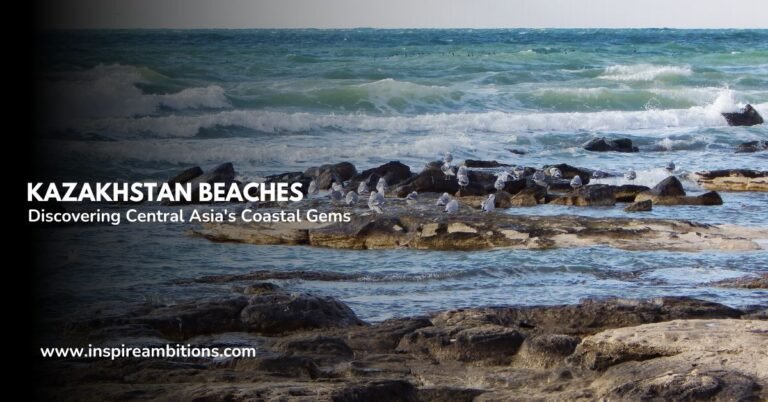Población de la ciudad de Abu Dhabi: perspectivas y tendencias de crecimiento
Abu Dhabi, the capital city of the United Arab Emirates, stands as a testament to rapid urban development and demographic dynamism in the heart of the Middle East. Its population is a melting pot, reflecting both the traditional Bedouin communities and a mosaic of expatriates.
With an urban population that has surpassed 1.5 million in recent years, the city is a bustling hub that balances its historical roots and modern ambitions as a global metropolis.
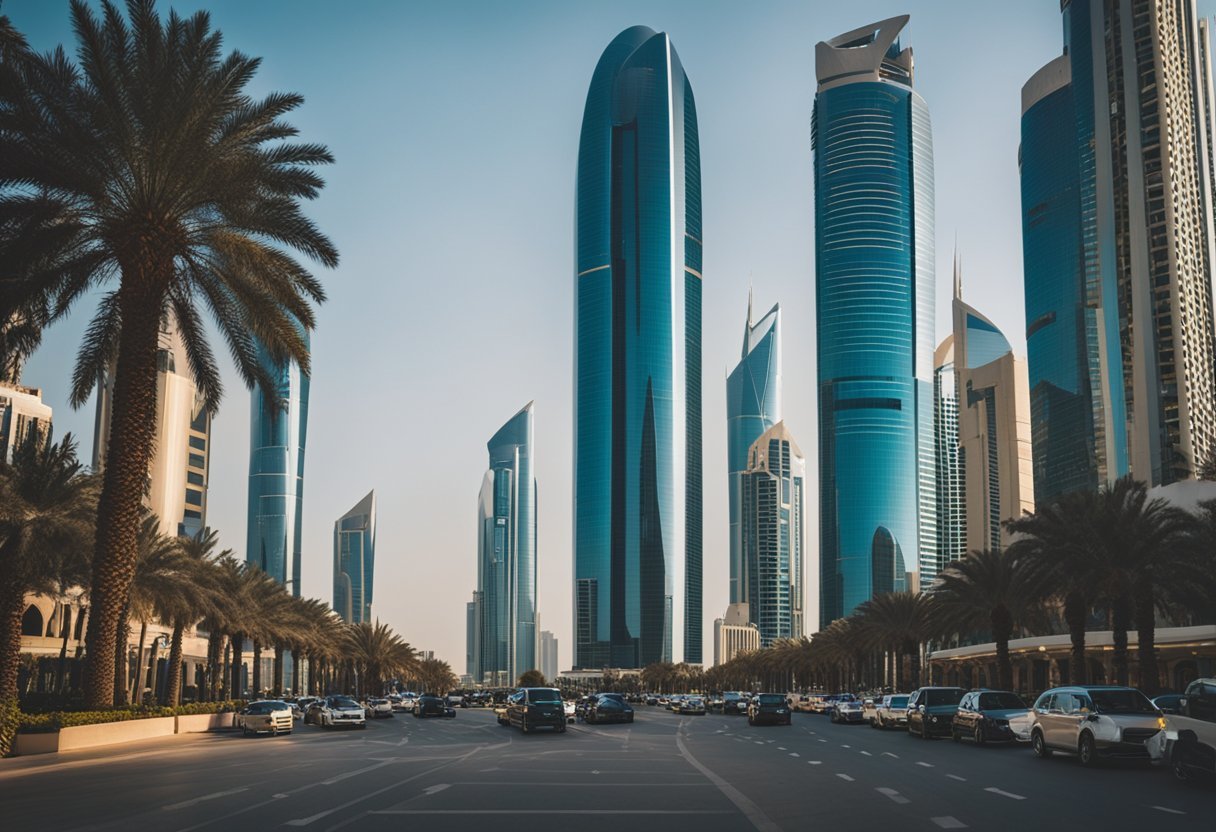
The city’s demographics paint a picture of a gender-skewed society, with a noticeably larger male population due partly to the influx of workers in various sectors that define the city’s economic and commercial growth.
As part of the more prominent emirate of Abu Dhabi, the city contributes significantly to the UAE’s financial strength, underpinned by a diverse economy and substantial investments in infrastructure.
Abu Dhabi’s substantial expatriate population not only contributes to the city’s growth but also adds to its cultural richness, situating it firmly on the map as a significant player among the major cities of Asia and the world.
Abu Dhabi City Population – Key Takeaways
- Abu Dabi population showcases a diverse cultural landscape within a significant urban centre.
- The city plays a pivotal role in the emirate’s robust economic landscape.
- Infrastructure advances and the city’s global connections underpin its international status.
Historical and Demographic Overview
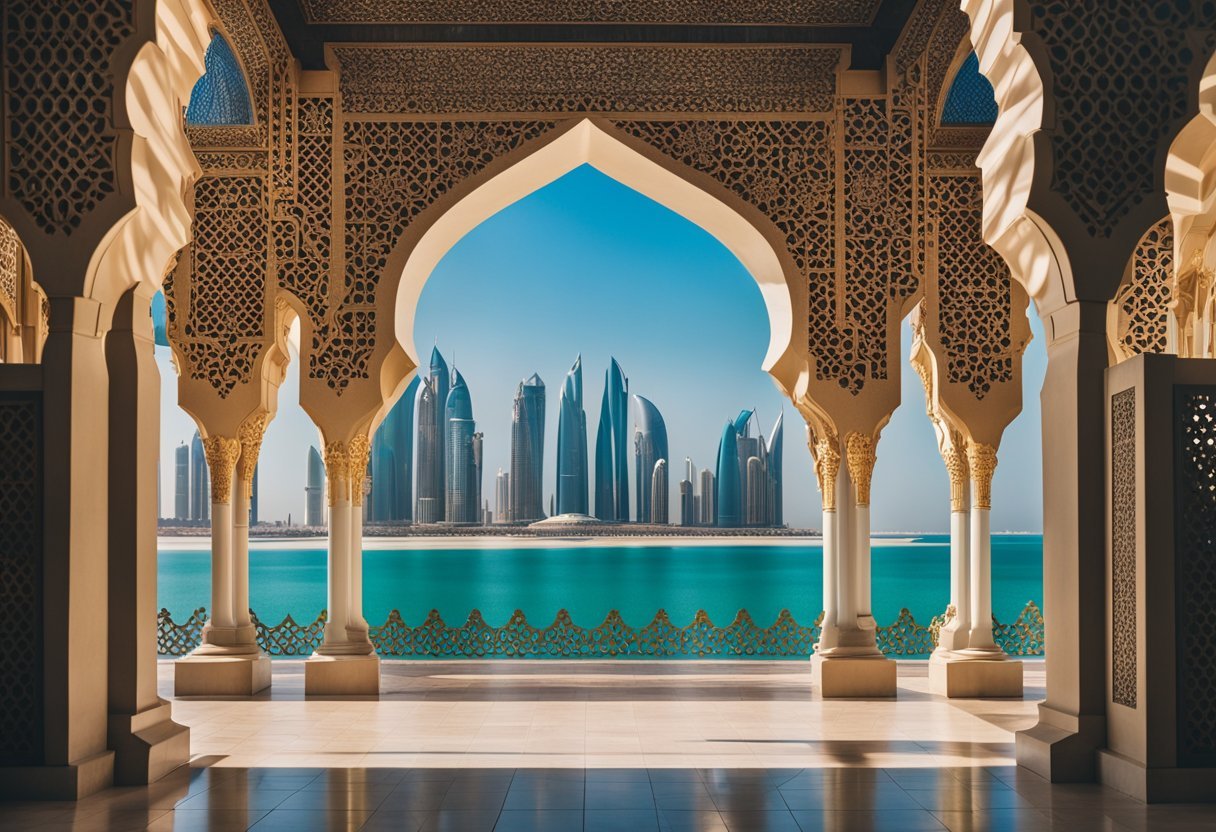
Como tu explore Abu Dhabi’s population dynamics, you’ll uncover a story of rapid growth and transformation. This section dives into the demographic trends from its origins to the anticipated state in 2030.
Population Growth and Projections
Abu Dhabi, the capital of the United Arab Emirates (UAE), has experienced significant population growth in recent decades. The urban population currently stands at approximately 1.7 million, with projections suggesting continued growth. By 2030, experts anticipate further increases, reflecting an overall trend of regional urban development.
Contexto histórico
The history of Abu Dhabi is rich and diverse, dating back to the Bani Yas tribe, who first settled in the region. Once a small pearl-diving community along the Trucial Coast, the city’s evolution took a turn with the discovery of oil. Abu Dhabi transformed from a series of fishing villages into a modern metropolis, historically known as part of both the Estados treguales y Trucial Oman, before forming the UAE in a union brokered by Gran Bretaña.
Urban Area and Development
The urban area of Abu Dhabi encompasses not just the city centre but also the sprawling suburbs and developments, including the Oasis de Liwa. Infrastructure improvements, such as expanding electricity and water networks, have catalysed development across the mainland and outlying islands.
Cultural Demographics
Abu Dhabi’s residents comprise a rich tapestry of diverse backgrounds, with islam being the predominant religion and Arábica the official language. Additionally, Inglés is widely spoken, reflecting the city’s international connections. The indigenous population has shaped cultural demographics, and the city’s economic opportunities draw many expatriates.
Education and Resident Profiles
El education profile of Abu Dhabi’s residents is evolving rapidly, with leading institutions such as Abu Dhabi University y Sorbonne establishing campuses here. Your city hosts an increasing number of estudiantes y escuelas, which speaks to the emirate’s growing emphasis on education and human capital development.
Economy and Commerce
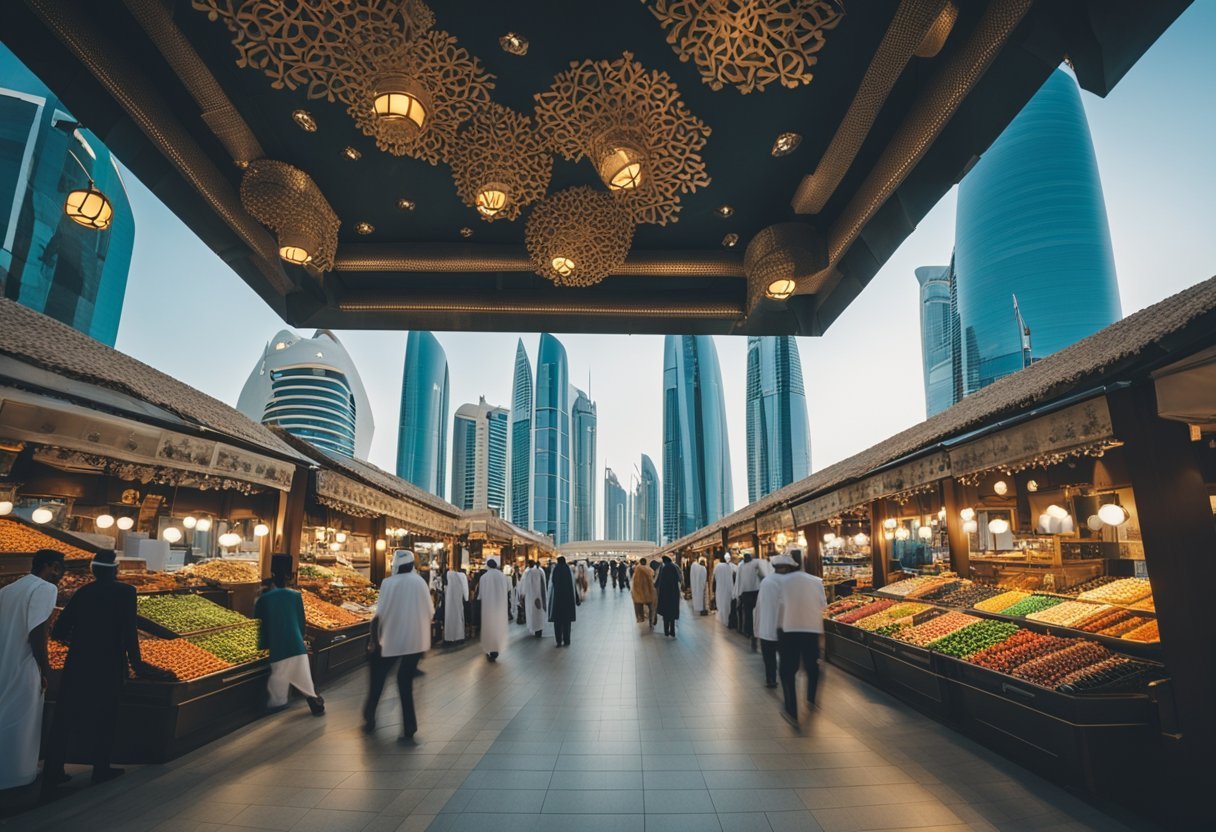
You will find that Abu Dhabi’s status as the capital of the United Arab Emirates (UAE) plays a significant role in its economic stature, deeply intertwined with its oil wealth and strategic initiatives towards sustainable commerce.
Economic Indicators and GDP
The economy of Abu Dhabi, considering the wider UAE, is marked by a rich wealth from oil reserves, with substantial contributions to the Gross Domestic Product (GDP). Your understanding of Abu Dhabi’s economic performance is enhanced by recognising its strategic diversification efforts to reduce oil dependency. Non-oil sectors have been increasingly contributing to the emirate’s GDP in recent years, evidencing a robust and dynamic economic profile.
Oil Fields and Resources
Abu Dhabi sits atop the sixth-largest oil reserves in the world, a significant factor underpinning your comprehension of the emirate’s wealth. These oil fields are the backbone of Abu Dhabi’s economy, ensuring its status as a critical player in the global energy market. With moves to enhance the efficiency of oil production, Abu Dhabi secures both immediate revenues and long-term economic sustainability.
Trade and Commerce
Your awareness of Abu Dhabi’s economy is incomplete without acknowledging its burgeoning commerce sector. With Port Zayed playing a crucial role in international trade routes, Abu Dhabi has established itself as a central hub for regional trade. The costo de vida en Abu Dabi reflects its economic growth, exhibiting a balance between affluence and investment in infrastructure to facilitate business and trade.
Infraestructura y Servicios
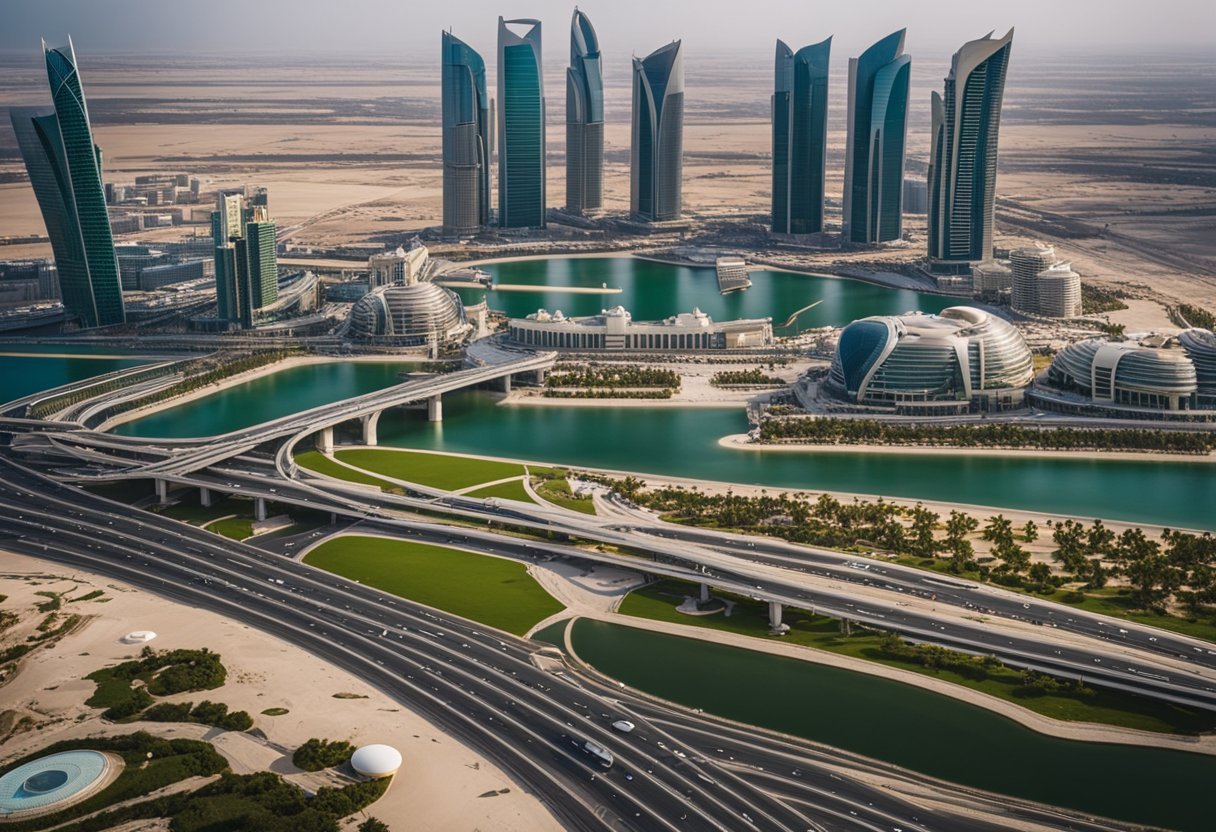
As Abu Dhabi’s urban population grows, so does its demand for infrastructure and services. Your experience of the city’s facilities will likely be shaped by the efficiency and reach of its transportation networks, the accessibility of government offices and utilities, and the city’s careful mapping and urban planning.
Transportation Networks
An expansive transportation infrastructure, incluyendo el Abu Dhabi International Airport, serves Abu Dhabi and is a crucial gateway to the city. Abu Dhabi’s buses form the backbone of the sistema de transporte público, with numerous routes facilitating travel across the city. The bus network is designed to provide a reliable mode of transportation, conectando significant points of interest and residential areas.
Government Offices and Utilities
Your interaction with the city’s infrastructure inevitably involves contact with government offices. These offices are strategically located to be accessible, providing essential services that support your daily life, from water provision to energy distribution. The utilities are robust, ensuring you have consistent access to electricity and water, directly impacting the calidad de vida en Abu Dabi.
Map and Urban Layout
Detailed maps representing the city’s thoroughfares and neighbourhoods facilitate understanding of Abu Dhabi’s urban layout. The city’s planning reflects an understanding of the increasing urban population, with areas designated for future growth and development. Graphics of the city layout often depict various transport routes, highlighting bus lines and emphasising the integration between different modes of transport.
Tourism and International Influence
As you explore Abu Dhabi, the capital of the United Arab Emirates, you’ll quickly realise the city’s global influence, partly due to its ambitious targets in the tourism sector. With plans to attract 24 million visitors by 2023, the city is experiencing a surge in tourism capabilities.
Su visit to Abu Dhabi is enriched by the Louvre Abu Dabi. This cultural beacon showcases artistic achievements from various civilisations and signifies the union of international partnerships and the MENA (Middle East and North Africa) region’s dedication to culture and education.
Regarding accommodation, you’re well-catered, with more than 168 hotel establishments providing over 26,000 rooms. These range from budget-friendly options to luxury resorts, ensuring your stay is comfortable regardless of your preferences or budget.
Here are some quick facts:
- Tourism Growth: Abu Dhabi saw a substantial 10.5% increase in international visitors in 2019
- Hoteles: Over 168 establishments with 26,000+ rooms
- Monumentos culturales: The Louvre Abu Dhabi, a symbol of culturartisticboration
Your experience in Abu Dhabi is a testament to the city’s strategic approach to reshaping its economy, with the oil and gas share of GDP dropping from 59.3% to 50.2% over 15 years. The focus has moved towards tourism as a driver for growth, highlighting the city’s adaptability and foresight.
MENA’s hospitality and richness in experiences shine, making your visit not just a holiday but a vivid journey through an evolving tapestry of culture, luxury, and innovation.




